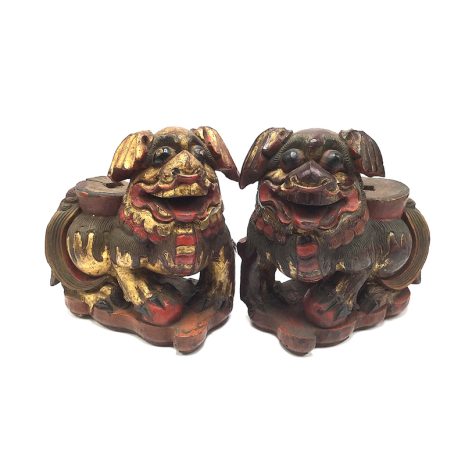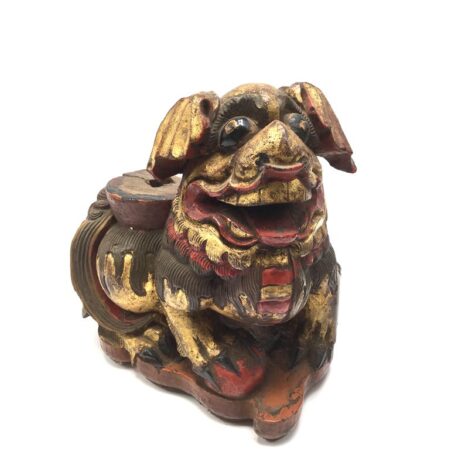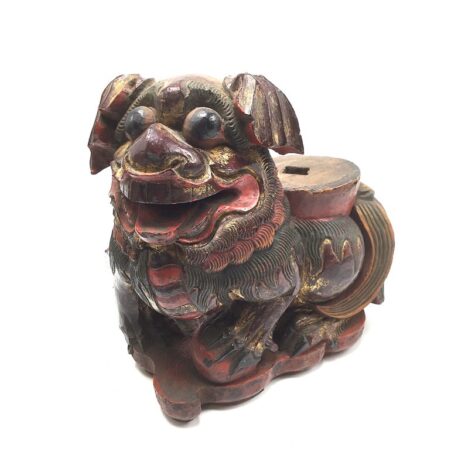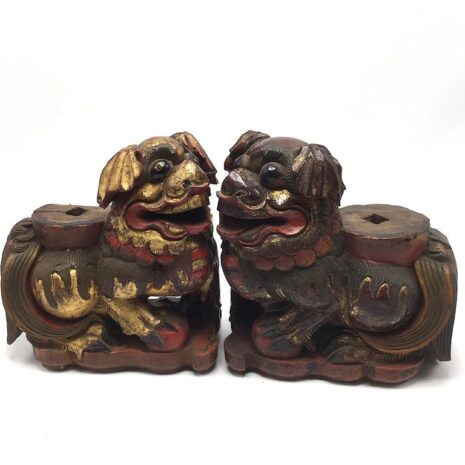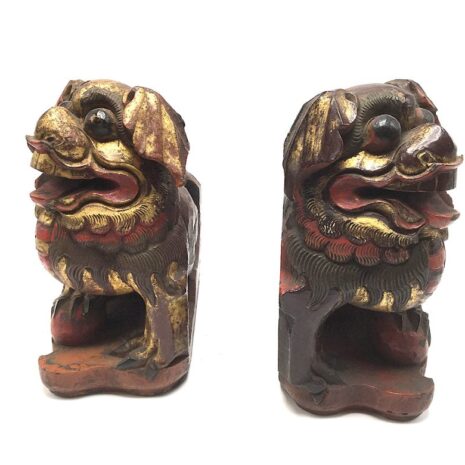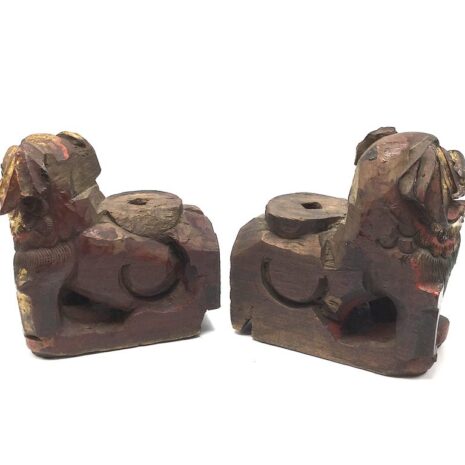Description
Whimsical carvings of fu lions were the most popular mythical animals in Chinese homes, especially during the Ming and Qing dynasties, as free standing statues, designs on furniture, architectural elements and functional pieces in private homes or gardens or on a home altar to bring fu and the blessings to the home. This incredibly cute pair indeed looks more dog like than “lionesque” with floppy ears, smiling faces with mouths open, tongues hanging out, bulging eyes, long tails curled under their back legs, and long pointed nails extending from their paws. Posed as crouched rather than in the typical sejant lion pose, this pair is two males with the front paws on top of an orb is more folk art than spiritual. Traditional, they have short bodies covered with rows of hair and a three-part tail and are covered in auspicious colors: gold reflecting a lion’s golden sable color and red for good fortune (fu). This pair were decorative elements on furniture such as a bed as seen by the rounded projections with holes on their backs and their flat and plain backsides in contrast to the ornate front. They were likely used to add feng shui and fu to the room and were a wish for prosperity and fertility. Each is finely carved from one piece of wood with a lacquer coating. Since lions are guardians of Buddhism (Buddha’s name Shakyamuni means prince of the lion clan), they were often made to look fierce, but with a touch of whimsy. This artist tried to achieve both: a fierce stance with bulging eyes staring out below bushy brows and long curved nails to ward off potential evil and on the friendly side, crouched poses with floppy ears, smiling open mouthed faces, tongues hanging out, and curled tail. As Buddhist images they are a reminder that all sentient beings should live in peace and with compassion for each other. They are in very good condition with signs of wear consistent with age and use, one with faded pigmentation and gilt that still retains its artistic charm. Endearing as fanciful, quirky and delightful additions to any environment, pairs like this have become very difficult to find.
Sources:
Ong Hean-Tatt, Chinese Animal Symbolisms, Selangor, Malaysia, Pelanduk Publications, 1997.
Elsie P. Mitchell, The Lion-Dog of Buddhist Asia, New York, Fugaisia, 1991.
Patricia Bjaaland Welch, Chinese Art: A Guide to Motifs and Visual Iconography, North Clarendon, Vermont, Tuttle Publishing, 2008.
Williams, C.A.S., Chinese Symbolism and Art Motifs, Edison, N.J., Castle Books, N.D.
Additional information
| Weight | 8 lbs |
|---|---|
| Dimensions | 18 × 12 × 6 in |
| Place of Origin | China |
| Period | Antique, Qing Dynasty |
| Date | 19th Century |
| Materials and Technique | Wood |
| Dimensions (inches) | Ht: 7.5” Width: 7” Depth: 3.5” |
| Dimensions (metric) | Ht: 19.05cm Width: 17.78 Depth: 8.89 |
| Weight | 4lb 3oz |
| Condition | Very good, see description |
| Item Number | 16735BSE |
| Shipping Box Size |

